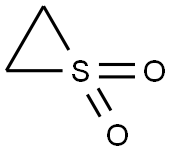Taurine
- CAS No.
- 107-35-7
- Chemical Name:
- Taurine
- Synonyms
- TATU;2-AMINOETHANE-1-SULFONIC ACID;2-amino-ethanesulfonicaci;TAURINE extrapure CHR;Taurine Powder;AMINOETHYLSULFONIC ACID;2-Aminoethanesulfonic acid;2-AMINOETHANESULPHONIC ACID;TURIN;O-Due
- CBNumber:
- CB2742654
- Molecular Formula:
- C2H7NO3S
- Molecular Weight:
- 125.15
- MDL Number:
- MFCD00008197
- MOL File:
- 107-35-7.mol
- MSDS File:
- SDS
| Melting point | >300 °C (lit.) |
|---|---|
| Density | 1.00 g/mL at 20 °C |
| FEMA | 3813 | TAURINE |
| refractive index | 1.5130 (estimate) |
| storage temp. | 2-8°C |
| solubility | H2O: 0.5 M at 20 °C, clear, colorless |
| form | Crystals or Crystalline Powder |
| pka | 1.5(at 25℃) |
| color | White |
| PH | 4.5-6.0 (25℃, 0.5M in H2O) |
| Odor | bland |
| Water Solubility | 5-10 g/100 mL at 23.5 ºC |
| λmax |
λ: 260 nm Amax: 0.006 λ: 280 nm Amax: 0.005 |
| JECFA Number | 1435 |
| Merck | 14,9074 |
| BRN | 1751215 |
| Stability | Stable. Incompatible with strong oxidizing agents. |
| InChIKey | XOAAWQZATWQOTB-UHFFFAOYSA-N |
| LogP | -3.36--1.2 at 20℃ |
| FDA 21 CFR | 573.980 |
| Substances Added to Food (formerly EAFUS) | TAURINE |
| CAS DataBase Reference | 107-35-7(CAS DataBase Reference) |
| EWG's Food Scores | 1 |
| FDA UNII | 1EQV5MLY3D |
| NIST Chemistry Reference | 2-Aminoethanesulfonic acid(107-35-7) |
| EPA Substance Registry System | Taurine (107-35-7) |
SAFETY
Risk and Safety Statements
| Symbol(GHS) |  GHS07 |
|||||||||
|---|---|---|---|---|---|---|---|---|---|---|
| Signal word | Warning | |||||||||
| Hazard statements | H315-H319-H335 | |||||||||
| Precautionary statements | P305+P351+P338-P264-P280-P302+P352+P332+P313+P362+P364-P305+P351+P338+P337+P313-P261-P280a-P304+P340-P405-P501a | |||||||||
| Hazard Codes | Xi | |||||||||
| Risk Statements | 36/37/38 | |||||||||
| Safety Statements | 26-36-24/25 | |||||||||
| WGK Germany | 2 | |||||||||
| RTECS | WX0175000 | |||||||||
| TSCA | Yes | |||||||||
| HS Code | 29211980 | |||||||||
| Toxicity | LD50 orally in Rabbit: > 5000 mg/kg | |||||||||
| NFPA 704 |
|
Taurine price More Price(64)
| Manufacturer | Product number | Product description | CAS number | Packaging | Price | Updated | Buy |
|---|---|---|---|---|---|---|---|
| Sigma-Aldrich | W381306 | Taurine ≥98%, FG | 107-35-7 | 1kg | $75.4 | 2024-03-01 | Buy |
| Sigma-Aldrich | W381306 | Taurine ≥98%, FG | 107-35-7 | 10Kg | $352 | 2024-03-01 | Buy |
| Sigma-Aldrich | 86329 | Taurine BioUltra, ≥99.5% (T) | 107-35-7 | 25g | $112 | 2024-03-01 | Buy |
| Sigma-Aldrich | 8.08616 | Taurine for synthesis | 107-35-7 | 5G | $32.6 | 2024-03-01 | Buy |
| Sigma-Aldrich | 8.08616 | Taurine for synthesis | 107-35-7 | 250g | $77.7 | 2024-03-01 | Buy |
Taurine Chemical Properties,Uses,Production
Description
Taruine is an organic compounds that widely existing in animal tissues. It is a sulfur amino acid, but not being used for protein synthesis. It is rich in the brain, breasts, gallbladder and kidney. It is an essential amino acid in the pre-term and newborn infants of human. It has various kinds of physiological functions including being as a neurotransmitter in the brain, conjugation of bile acids, anti-oxidation, osmoregulation, membrane stabilization, modulation of calcium signaling, regulating the cardiovascular function as well as the development and function of skeletal muscle, the retina, and the central nervous system. It can be manufactured through the ammonolysis of isethionic acid or the reaction of aziridine with sulfurous acid. Because of its highly important physiological role, it can be supplied to energy drinks. It can also be used in cosmetics to maintain skin hydration, and used in some contact lens solution.
History
As the conditionally essential amino acid of the human body, it is a kind of β- sulphamic acid. In mammalian tissues, it is a metabolite of methionine and cystine. It was first isolated from ox bile in 1827, hence the name taurine. It commonly exists in the form of free amino acids in various tissues of animals, but not goes into proteins without combination. Taurine is rarely found in plants. Early on, people had considered it a bile acid binding agent of taurocholic combined with cholic acid. However, recent studies have shown that taurine has many important biological functions apart from the above mentioned forming taurocholic acid and participating in the digestion and absorption of lipids.It is important nutrients for normal development and function of cranial nerve to play the role in adjusting a variety of nerve cells of the central nervous system; taurine in retina accounts for 40% to 50% of total free amino acid, which is necessary for maintaining the structure and function of photoreceptor cells; affecting the myocardial contracts dint, regulating calcium metabolism, controlling arrhythmia, lowering blood pressure, etc; maintaining cellular antioxidant activity to protect the tissues from damaging free radicals; decreasing platelet aggregation and so on. As the metabolites containing sulphur amino acids, mammals have different abilities to synthesize taurine: The synthetic ability of rats and dogs is stronger, the synthetic ability of human and primate is lower, while that of kits and human infants is very low. Taurine in the infant mainly comes from the diet, so it is recommended to supplement the taurine in the baby's diet. Foods with a higher content of taurine include conch, clam, mussel, oyster, squid and other shellfish food, which chould be up to 500 ~ 900mg/100g in the table part; the content in fish is comparably different; the content in poultry and offal is also rich; the content in human milk is higher than cow milk; taurine is not found in eggs and vegetable food.
Medicinal effect
- Liver-strengthening cholagogue function: The combination of taurine and cholic acid can increase biliary permeability and is related to bile backflow; this product can also reduce cholesterol levels in the liver and reduce the formation of cholesterol calculus.
- Anti-inflammatory and antipyretic effects: It can lower the body temperature by effects on the central 5-HT system or catecholamine system.
- Hypotensive effect: After injecting this product, it shows the effects including reducing blood pressure, slowing down heart rate, regulating vascular tension and so on.
- Cardiac and anti-arrhythmia action: This product can regulate the combination of Ca++ in cardiac myocytes and can reverse the adverse effects of Ca++ on the myocardium.
- Hypoglycemic effect: This product directly affects the insulin receptor of the liver and muscle cell membrane and has the effect of insulin-like hypoglycemic action.
- Other effects: loosening up skeletal muscle, reversing myotonia and fighting fatigue after exercise. Local application of this product can reduce the increased pressure in the eyeball caused by prostaglandin; there are still nutritional effects. Clinical use at acute hepatitis, chronic hepatitis, fatty liver, cholecystitis, etc.,as well as use in bronchitis, tonsillitis, ophthalmia and other infectious diseases. This product can be tried for cold, alcohol withdrawal symptoms, arthritis, myotonia, etc.
Preparation
- Extract from the mollusk such as fish, shellfish and so on.
- After reacting to form sodium 2-hydroxyethanesulfonate at 70℃with ethylene oxide and sodium hydrogen sulfite as raw materials, this product can be obtained by further aminolysis and desalination [1].
- It can be obtained by reaction between ethylene imine and sulfurous acid [1].
- It can be obtained with nitroethylene and sodium bisulfite as raw materials[1]. CH2=CHNO2+NaHSO3→[1]
- It can be obtained preparing by sulfonation of sodium sulfite and aminolysis in liquid ammonia with sodium sulfite as the raw material [1].
- Ethanolamine is used as the raw material to react with hydrochloric acid to form chloroethylamine hydrochloride, which is reacted with sodium sulfite to produce sodium ethylamine sulfonate. This product can be obtained by desalination with dilute sulphuric acid [1].

- Use aziridine as the raw material and react with sulfur dioxide and water to obtain this product [1].

- Like 6, it can be obtained by using bromoethylamine hydrobromide as the raw material and reacting with sodium sulfite [1].
- Use 1, 2-dichloroethane as the raw material and react with sodium sulfite to produce chloroethanesulfonic acid sodium salt. React with ammonia under heating with pressure to form sodium amino ethyl sulfonate. Then it can be prepared by hydrochloric acid-acidification desalination [1].
- Like 9, we use hydroxyethanesulphonic acid as the raw material and react with ammonia under heating with pressure to obtain this product [1].
- We use 2,2-dimethyl thiazoles as the raw material, hydrogen peroxide or manganese dioxide as the oxidizing agent. This product can be obtained by oxidation under pressure [1], with acetone as by-product at the same time.
- It can be obtained by using 2-amino alcohol monoester as the raw material and reacting with sodium sulfite [1]. (H2NCH2CH2O)HSO3+Na2SO3→ [1]+Na2SO4
- N- vinyl propanamide is used as the raw material to react with sodium bisulfite to produce sodium 2- propane amino ethyl sulfonate. Then this product can be obtained by acidification desalination and hydrolysis.
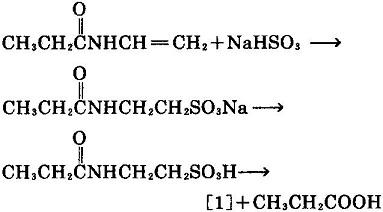
References
https://en.wikipedia.org/wiki/Taurine
https://pubchem.ncbi.nlm.nih.gov/compound/taurine#section=Top
Description
Taurine is a sulfur-containing amino acid with simple structure in animals. Its chemical name is 2-aminoethanesulfonic acid. Its molecular formula is C2H7NO3S and its molecular weight is 125.15. It is odorless and slightly sour. Its dilute solution is neutral and stable to heat. It combines with cholic acid in human and animal bile and exists in the form of binding; In brain, ovary, heart, liver, milk, pineal gland, pituitary, retina, adrenal gland and other tissues, it exists in free form, with a total amount of 12-18g, but does not participate in protein synthesis. Taurine is a conditionally essential amino acid for human body and plays an important role in the development of fetal and infant nervous system. Taurine can be widely used in medicine, food additives, fluorescent brighteners, organic synthesis and other fields. It can also be used as biochemical reagent, wetting agent, pH buffer and so on.
Chemical Properties
White crystalline powder
Chemical Properties
Taurine is a naturally occurring amino acid with a bitter taste and sharp flavor. It is a nonessential amino acid by definition because the body can synthesize it from methionine and cysteine.
Occurrence
Reported found in beef, black beans, chicken, chick peas, clams, cod, fish, lamb, milk, octopus, oysters, pistachios, pork, scallops, shrimp and other natural sources.
Uses
Taurine is an organic acid found in animal tissues and is a major constituent of bile. Taurine has many biological roles such as conjugation of bile acids, antioxidation, osmoregulation, membrane stabilization and modulation of calcium signaling. It is an amino acid nutritional supplement that is used to treat taurine-deficiency diseases such as dilated cardiomyopathy, a type of heart disease.
Definition
ChEBI: Taurine is an amino sulfonic acid that is the 2-amino derivative of ethanesulfonic acid. It is a naturally occurring amino acid derived from methionine and cysteine metabolism. An abundant component of fish- and meat-based foods, it has been used as an oral supplement in the treatment of disorders such as cystic fibrosis and hypertension. It has a role as a human metabolite, an antioxidant, a mouse metabolite, a Saccharomyces cerevisiae metabolite, an Escherichia coli metabolite, a glycine receptor agonist, a nutrient and a radical scavenger. It is a conjugate acid of a 2-aminoethanesulfonate. It is a tautomer of a taurine zwitterion.
Biosynthesis
In addition to the intake of taurine directly from the diet, the animal body can also biosynthesis in the liver. The intermediate product of methionine and cysteine metabolism, cysteine, is decarboxylated to taurine by cysteine decarboxylase (CSAD), and then oxidized to taurine. CSAD is considered to be the rate limiting enzyme of taurine biosynthesis in mammals, and compared with other mammals, the activity of human CSAD is lower, which may be due to the low taurine synthesis ability in human body. Taurine can participate in the formation of taurocholic acid and hydroxyethyl sulfonic acid after decomposition in vivo. The amount of taurine required depends on cholic acid binding capacity and muscle content.
General Description
Taurine, which has chemistry similar to other amino acids, is important in several of the body's metabolic processes. Taurine is thought to have antioxidant properties. But little is known about the effects of long-term supplemental taurine use.
Air & Water Reactions
Water soluble.
Reactivity Profile
Taurine is an amino acid found in combination with bile acids [Hawley].
Hazard
Toxic by ingestion.
Health Hazard
ACUTE/CHRONIC HAZARDS: Taurine evolves highly toxic fumes when heated to decomposition, and may cause irritation on contact.
Fire Hazard
Flash point data are not available for Taurine, but Taurine is probably combustible.
Biological Activity
One of the most abundant free amino acids in the brain. A partial agonist at the inhibitory glycine receptor.
Biochem/physiol Actions
Non-selective endogenous agonist at glycine receptors. Conditionally essential sulfonated amino acid which modulates apoptosis in some cells; functions in many metabolic activities; a product of methionine and cysteine metabolism.
Pharmacology
Taurine is an organic osmotic regulator. It not only participates in the regulation of cell volume, but also provides the basis for the formation of bile salts. It also plays an important role in the modulation of intracellular free calcium concentration. Although taurine is a special amino acid not included in proteins, taurine is the most abundant amino acid in brain, retina and muscle tissue. Taurine is widely used, such as in the function of central nervous system, cell protection, cardiomyopathy, renal insufficiency, abnormal development of renal function and retinal nerve injury. Almost all eye tissues contain taurine. The quantitative analysis of rat eye tissue extract showed that taurine was the most abundant amino acid in retina, vitreous, lens, cornea, iris and ciliary body. Many studies have found that taurine is an active substance that regulates the normal physiological activities of the body. It has the functions of anti-inflammatory, analgesic, maintaining the osmotic pressure balance of the body, maintaining normal visual function, regulating the calcium balance of cells, reducing blood sugar, regulating nerve conduction, participating in endocrine activities, regulating lipid digestion and absorption, increasing the contractility of the heart, improving the immune capacity of the body, and enhancing the antioxidant capacity of cell membrane Protect a wide range of biological functions such as cardiomyocytes.
Safety Profile
Experimental reproductive effects. Mutation data reported. When heated to decomposition it emits very toxic fumes of SOx and NOx.
Veterinary Drugs and Treatments
Taurine has proven beneficial in preventing retinal degeneration and the prevention and treatment of taurine-deficiency dilated cardiomyopathy in cats. Although modern commercial feline diets have added taurine, some cats still develop taurine-deficiency associated dilated cardiomyopathy. It may also be of benefit in taurine (±carnitine) deficient cardiomyopathy in American Cocker Spaniels and certain other breeds such as, Golden Retrievers, Labrador Retrievers, Newfoundlands, Dalmations, Portuguese Water Dogs, and English Bulldogs. Preliminary studies have shown evidence that it may be useful as adjunctive treatment for cardiac disease in animals even if taurine deficiency is not present. Because of its low toxicity, some have suggested it be tried for a multitude of conditions in humans and animals; unfortunately, little scientific evidence exists for these uses.
storage
Store at RT
Taurine Preparation Products And Raw materials
| Supplier | Tel | Country | ProdList | Advantage | |
|---|---|---|---|---|---|
| Hefei TNJ Chemical Industry Co.,Ltd. | +86-0551-65418679 +86-18949832763 | info@tnjchem.com | China | 2989 | 55 |
| Jinan Qinmu Fine Chemical Co.,Ltd. | +8618660799346 | sales@qinmuchem.com | China | 1009 | 58 |
| DONBOO AMINO ACID COMPANY | +8613063595538 | donboo@donboo.com | China | 9365 | 58 |
| Hebei ZB Gamay Biological Technology Co.,Ltd | +86-031189171450 +86-15632359451 | chem@zbvet.net | China | 222 | 58 |
| Hebei Jingbo New Material Technology Co., Ltd | +8619931165850 | hbjbtech@163.com | China | 1000 | 58 |
| Shanghai Medfine Bio-pharmaceutical Co., Ltd | +8613100311300 | tina.lv@bio-medfine.com | China | 202 | 58 |
| Hebei Dangtong Import and export Co LTD | +8615632927689 | admin@hbdangtong.com | China | 991 | 58 |
| shandong perfect biotechnology co.ltd | +86-53169958659; +8618596095638 | sales@sdperfect.com | China | 294 | 58 |
| Across Biotech Jinan Co LTD | +8613031735486 | frank@acrossbiotech.com | China | 105 | 58 |
| Henan Fengda Chemical Co., Ltd | +86-371-86557731 +86-13613820652 | info@fdachem.com | China | 7845 | 58 |
Related articles
- The synthesis and metabolism of
- Taurine is a sulfur-containing amino acid with simple structure in animals. Its chemical name is 2-aminoethanesulfonic acid.
- Apr 15,2022
View Lastest Price from Taurine manufacturers
| Image | Update time | Product | Price | Min. Order | Purity | Supply Ability | Manufacturer | |
|---|---|---|---|---|---|---|---|---|
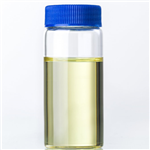 |
2024-04-25 | Taurine
107-35-7
|
US $1.00 / g | 1g | 99 | 20tons | Shanghai Longyu Biotechnology Co., Ltd. | |
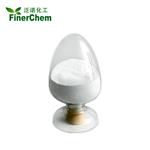 |
2024-04-25 | Taurine
107-35-7
|
US $2.00 / KG | 1KG | ≥99.5% | 500mt/year | Jinan Finer Chemical Co., Ltd | |
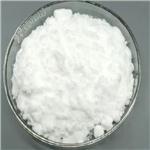 |
2024-04-24 | Taurine
107-35-7
|
US $70.00-60.00 / kg | 1kg | 99% | 20Tons | Hebei Dangtong Import and export Co LTD |






